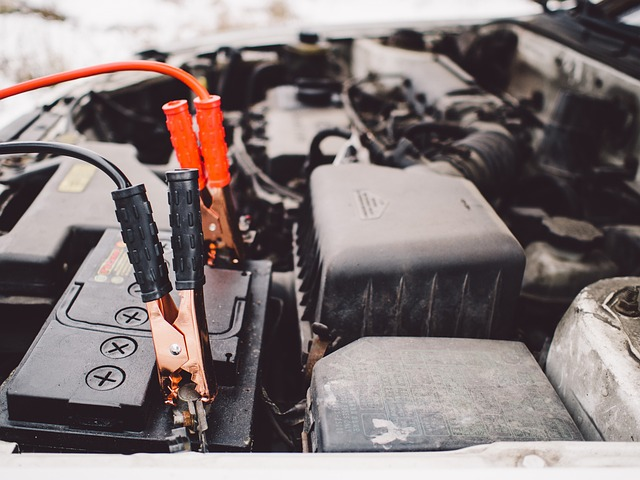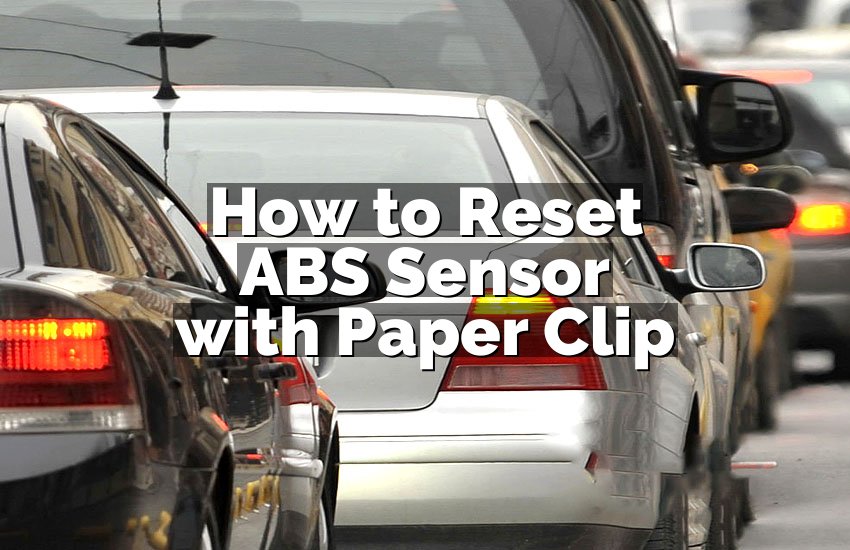To avoid sparks when connecting a car battery, always connect the positive terminal first, then the negative terminal. This prevents accidental sparking that could cause injury or damage to the battery.
When connecting a car battery, safety is paramount. By following proper procedures, you can ensure a smooth and safe connection without any potential hazards. Properly connecting the positive terminal before the negative terminal minimizes the risk of sparks. Remember, safety should always be the top priority when working with car batteries.
Now, let’s explore some key steps to safely and effectively connect your car battery without any unexpected mishaps.

Credit: www.stonemountainvw.com
Importance Of Avoiding Sparks
It is crucial to prevent sparks when connecting a car battery to avoid potential accidents or damage. Ensuring proper alignment and secure connections can help minimize the risk of sparking, keeping both you and your vehicle safe during the process.
Sparks can be dangerous when connecting a car battery, and it is important to take necessary precautions to avoid them. Not only can sparks harm you and others nearby, but they can also cause damage to the battery and electrical system of your car. It is crucial to follow safety measures and best practices to prevent any unpleasant incidents or costly repairs.Protecting Yourself And Others
When connecting a car battery, it is essential to prioritize safety to protect yourself and those around you. Here are a few ways to ensure everyone’s well-being:- Wear safety glasses to shield your eyes from any potential sparks or debris.
- Keep an appropriate distance between yourself and the battery while connecting the cables.
- Ensure you are working in a well-ventilated area to avoid inhaling harmful fumes.
- If possible, wear protective gloves to minimize the risk of electrical shock or burns.
- Always double-check the polarity of the battery terminals to prevent any accidental short circuits.
Preventing Damage To The Battery And Electrical System
In addition to protecting yourself and others, avoiding sparks is crucial to prevent damage to your car’s battery and electrical system. Here are some key tips to ensure the safety of these components:- Make sure the ignition is turned off: Before connecting or disconnecting the battery, always ensure that the ignition is switched off. This prevents any power surges that can damage sensitive electrical components.
- Connect the cables correctly: When attaching the battery cables, it is important to connect the positive terminal (+) first and then the negative terminal (-). This sequence helps to prevent any sparks or short circuits that can harm the battery or electrical system.
- Inspect the cables: Before connecting, thoroughly check the battery cables for any signs of damage or corrosion. Damaged cables can hinder the proper flow of electricity and may require immediate replacement.
- Tighten the connections: Ensure that the battery terminals are securely tightened. Loose connections can lead to a weak electrical connection, potentially causing sparks and damaging your car’s battery or electrical system.
Understanding Car Battery Connections
To avoid sparks when connecting a car battery, first, turn off all electronics. Next, connect the positive terminal first, followed by the negative terminal. Lastly, ensure the connections are secure and insulated to prevent any sparking. This helps protect both you and your vehicle while handling the battery.
Understanding Car Battery ConnectionsCar battery connections are crucial for a vehicle’s electrical system, and it’s essential to handle them with care to avoid sparks and accidents. Whether you’re replacing an old battery or jump-starting a car, understanding the proper way to connect and disconnect the battery can prevent damage to the vehicle and ensure your safety on the road.Positive and Negative TerminalsWhen dealing with car battery connections, it’s important to understand the positive and negative terminals. The positive terminal is usually marked with a “+” sign and is connected to the red cable, while the negative terminal is marked with a “-“ sign and is connected to the black cable. It’s crucial to identify these terminals correctly to avoid any mishaps during the connection process.Tools and Supplies NeededBefore starting the battery connection process, gather the necessary tools and supplies. You will need a pair of gloves to protect your hands from dirt and battery acid, as well as safety goggles to shield your eyes from possible sparks or battery leaks. Additionally, keep a wrench or socket set handy to help you loosen and tighten the battery terminal clamps securely.It’s vital to follow these simple guidelines and use the appropriate tools to avoid sparks when connecting a car battery. By understanding the positive and negative terminals and having the necessary tools and supplies, you can ensure a safe and smooth battery connection process.Preparing For The Connection
To avoid sparks when connecting a car battery, follow these simple steps for a safe and smooth process. Take the necessary precautions and ensure a secure connection for a hassle-free experience.
Safety Precautions
Before connecting a car battery, always wear protective gloves and safety glasses.
- Protect your eyes from splashing acid.
- Avoid wearing jewelry or metal objects that might cause a short circuit.
Gathering The Necessary Tools
Make sure you have the following tools on hand:
- Work gloves
- Safety glasses
- Wrench or socket set
- Wire brush or sandpaper
Locating The Battery
Most car batteries are located in the engine bay, either on the left or right side.
Refer to your vehicle’s manual for specific instructions on locating the battery.
Identifying The Terminals
Identify the positive (+) and negative (-) terminals on the battery.
The positive terminal is usually marked with a red cap or the plus symbol, while the negative terminal is marked with a black cap or the minus symbol.
Credit: www.quora.com
Proper Steps For Connecting A Car Battery
Proper Steps for Connecting a Car Battery:
Starting With The Negative Terminal
- Locate the negative terminal before connecting the car battery.
- Attach the negative cable to the negative terminal first.
Using The Appropriate Tools
- Use insulated wrenches or tools for handling battery connections.
- Avoid using metal tools that can cause sparks when connecting the battery.
Securing The Connections
- Tighten the battery cables securely to prevent any loose connections.
- Ensure the cables are free of corrosion for a proper connection.
Double-checking The Connections
- Verify that the connections are secure before starting the vehicle.
- Check for any loose cables or signs of sparking after connecting the battery.
Insulating The Connections
| Wrap electrical tape around the battery terminals | Install battery terminal protectors to prevent accidental contact |
Common Mistakes To Avoid
When connecting a car battery, it’s essential to be cautious and avoid common mistakes that can lead to sparks and potential damage. By being aware of these pitfalls, you can ensure a smooth and safe connection process. Let’s take a look at the common mistakes to avoid:
Reversing The Polarity
One of the most critical mistakes when connecting a car battery is reversing the polarity. This can occur when the positive and negative terminals are mixed up. To avoid this, always double-check the markings on the battery and the cables before making any connections. Reversing the polarity can cause significant damage to the vehicle’s electrical system and should be avoided at all costs.
Touching Metal Objects With Wires
Another common mistake is allowing the exposed wires to come into contact with metal objects. This can create a short circuit and lead to sparks, posing a safety hazard. To prevent this, ensure that the wires are handled carefully and kept away from any metal surfaces during the connection process.
Using Excessive Force
Using too much force when connecting the battery terminals can also result in sparks. Excessive force may cause the cables to slip and touch adjacent metal components, leading to an electrical discharge. When fastening the terminals, apply firm but gentle pressure to ensure a secure connection without risking sparks.
Safety Tips For Working With Car Batteries
Working with car batteries can be potentially dangerous if proper safety precautions are not followed. Sparks can ignite flammable substances and cause serious injuries. It is important to take the necessary steps to avoid sparks and flames during the process. Here are some safety tips to keep in mind when connecting a car battery:
Wearing Protective Gear
When working with car batteries, always wear protective gear such as gloves and safety glasses. This will help protect your hands and eyes from corrosive chemicals, sparks, and potential battery acid splashes. Ensure that your clothing covers your arms and legs as an additional safety measure. Wearing protective gear minimizes the risk of injury and increases your overall safety.
Working In A Well-ventilated Area
It is crucial to work in a well-ventilated area to dissipate any potentially harmful fumes. Car batteries emit gases, including hydrogen gas, which is highly flammable. Ensure there is proper airflow in the workspace by opening doors or windows. If working in an enclosed space, consider using an exhaust fan to remove any fumes. Good ventilation reduces the risk of ignition and improves safety during battery connections.
Keeping Sparks And Flames Away
Sparks and flames can easily ignite flammable substances present around car batteries. To avoid this, keep all potential sources of ignition away from the battery. This includes tools that could create sparks, such as wrenches or metallic objects. Ensure the battery terminals are free from any foreign objects that could cause a short circuit. By keeping sparks and flames at a safe distance, you minimize the risk of accidental ignition.
Avoiding Smoking Or Open Flames
When working with car batteries, it is crucial to avoid smoking or having open flames nearby. Lit cigarettes, matches, lighters, or even candles can all be potential sources of ignition. Smoking or having open flames close to the battery increases the risk of an accident and should be strictly avoided. Working in a designated non-smoking area further reduces the chances of sparks, flames, and potential hazards.
By following these safety tips, you can ensure a secure and hassle-free car battery connection without the risk of sparks or flames. Practice caution and prioritize safety at all times for a smooth and incident-free experience.
Maintenance Practices To Extend Battery Life
To avoid sparks when connecting a car battery and extend its life, follow these maintenance practices. First, always wear proper protective gear and ensure the engine is off. Clean the battery terminals and cables, then securely tighten the connections. Finally, apply a thin layer of petroleum jelly to prevent corrosion.
Regularly Cleaning Terminal Connections
One of the crucial maintenance practices to extend the life of your car battery is regularly cleaning the terminal connections. Over time, corrosion and dirt build-up on the battery terminals can hinder the flow of electricity and lead to spark formation. To prevent this, make it a habit to clean the terminal connections every few months.Here’s a simple step-by-step guide on how to clean the terminal connections:- Put on safety gloves and goggles to protect yourself from any potential harm.
- Start by disconnecting the negative terminal (black) using a wrench or a battery terminal puller. Remember to always remove the negative terminal first to avoid any electrical mishaps.
- Gently scrub the battery terminals using a wire brush to remove any corrosion or dirt. Ensure that the brush reaches all areas of the terminals, including the clamps and cable ends.
- Next, clean the battery posts by brushing them with the wire brush, removing any dirt or residue.
- Rinse the terminals and posts with a mixture of baking soda and water to neutralize any remaining acid. Use a small brush or toothbrush to reach into crevices if needed.
- Once cleaned, dry the terminals and posts using a clean cloth or paper towel.
- Reconnect the negative terminal followed by the positive terminal (red), tightening them securely with a wrench.
Checking Battery Fluid Levels
Another essential maintenance practice for extending battery life is regularly checking the battery fluid levels. Lead-acid batteries, commonly found in most cars, require adequate amounts of electrolyte solution to function optimally. Low fluid levels can affect the battery’s performance and lead to sparks when connecting or disconnecting it.To check the battery fluid levels, follow these simple steps:- Locate the battery in your car’s engine bay.
- Inspect the battery casing and find the fluid level indicator markings.
- If the battery has removable caps, carefully remove them using a flathead screwdriver.
- Check the fluid level in each cell of the battery. Ideally, the fluid should be just below the split-ring indicator or the fill line indicated on the casing.
- If the fluid level is low, add distilled water to each cell to reach the desired level. Avoid overfilling, as it can lead to electrolyte overflow.
- Replace the caps securely after adding water.
Avoiding Overcharging The Battery
Overcharging your car battery is a common mistake that can lead to sparks and ultimately shorten its lifespan. When a battery is overcharged, excessive heat is generated, which can cause the battery fluid to evaporate and result in reduced battery capacity. To avoid overcharging the battery, it’s essential to follow these guidelines:- Ensure that your vehicle’s charging system, including the alternator and voltage regulator, is functioning correctly.
- Use a voltmeter to monitor the battery’s voltage regularly. A fully charged battery should have a voltage reading between 12.4 to 12.6 volts.
- If you need to charge your battery, use a battery charger specifically designed for your battery type and follow the manufacturer’s instructions.
- Avoid leaving your battery connected to a charger for an extended period, especially if it is a high-amperage charger. Remove the charger once the battery is fully charged to prevent overcharging.
Using A Battery Trickle Charger
If you need to maintain your car’s battery during long periods of inactivity, such as during winter storage or vacations, using a battery trickle charger can help prolong its life. A trickle charger delivers a low, continuous charge to the battery, preventing it from discharging completely and reducing the risk of sparks when reconnecting.Here’s how to use a battery trickle charger effectively:- Choose a trickle charger suitable for your battery type and capacity.
- Ensure that the charger is unplugged before connecting it to the battery.
- Connect the positive (red) clamp of the charger to the positive terminal of the battery and the negative (black) clamp to the negative terminal.
- Plug in the charger and set it to the appropriate voltage and charging mode as recommended by the manufacturer.
- Allow the charger to restore the battery’s charge slowly over time. It’s crucial to monitor the battery’s progress and disconnect the charger once it reaches a full charge.
- Disconnect the charger by removing the negative (black) clamp first and then the positive (red) clamp.

Credit: m.youtube.com
Troubleshooting Battery Connection Issues
When it comes to troubleshooting battery connection issues, it’s important to be cautious and follow the correct steps to ensure a safe and efficient process. Making the right connections is essential in preventing sparks and potential damage to the car battery and electrical system. Here are some common issues to look out for when connecting a car battery:
No Power Flowing To The Car
If you find that there’s no power flowing to your car after connecting the battery, it’s crucial to double-check the connections. Loose or improperly attached terminals may be the culprit. Using a wrench, ensure the terminals are securely fastened to the battery posts to allow a proper flow of electricity.
Loose Or Corroded Connections
Loose or corroded connections can lead to poor electrical conductivity and even sparks. Inspect the battery terminals for any signs of corrosion, which can hinder the connection. Clean the terminals using a mixture of baking soda and water, then reattach them securely to the battery posts, ensuring a tight connection to avoid sparks and maintain a steady power flow.
Damage To The Battery Or Electrical System
Improperly connecting the car battery can result in damage to the battery or the electrical system. Ensure that the positive and negative terminals are correctly matched with the corresponding cables to prevent short circuits. Additionally, inspect the cables for any signs of wear or damage. If any issues are detected, replace the damaged components to avoid potential hazards.
When To Seek Professional Help
If you lack confidence in your DIY skills, it’s best to let a professional handle the task.
Lack Of Confidence In Diy Skills
Feeling unsure? Call a pro to avoid potential accidents or damage to your vehicle.
Persistent Electrical Problems
Don’t ignore ongoing issues. Seek help to prevent further complications.
Battery Leakage Or Damage
If you notice leaks or damage, consult a professional immediately to avoid hazards.
Conclusion
To sum up, preventing sparks when connecting a car battery is crucial for safety. By following the right steps, such as turning off all electrical components and wearing insulated gloves, you can avoid potential mishaps. Prioritizing caution and careful handling can help ensure a smooth and safe battery connection experience.


